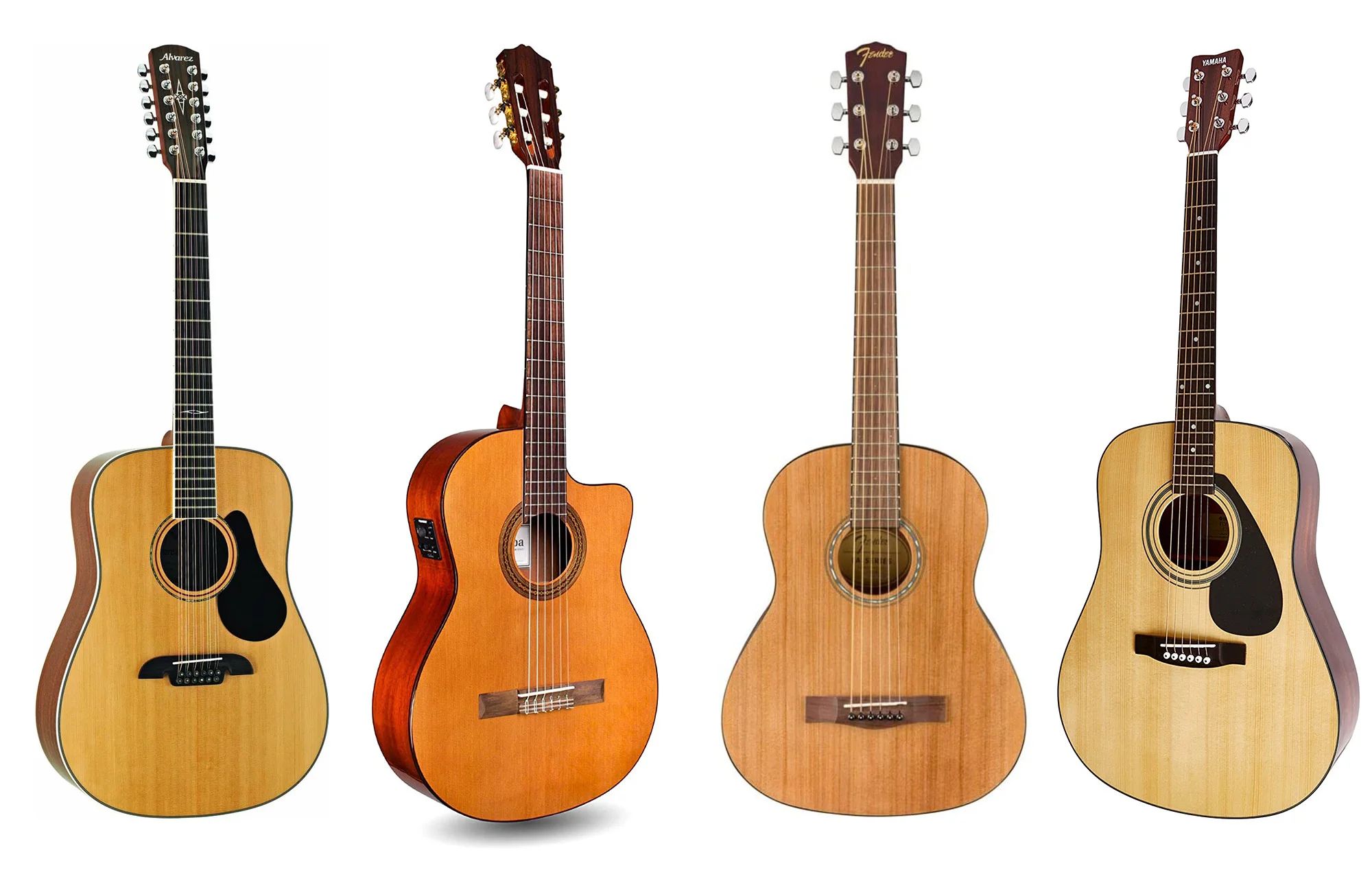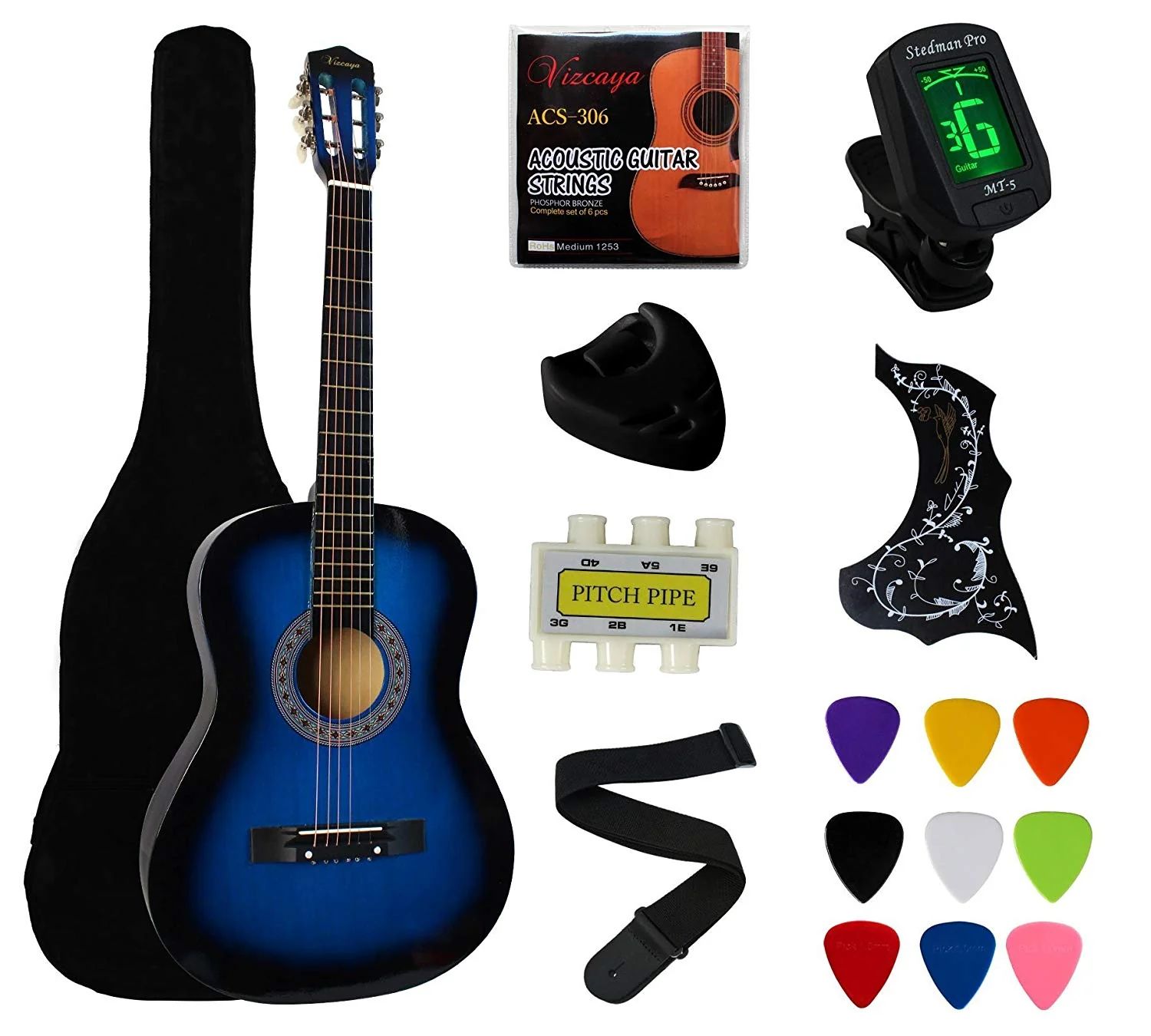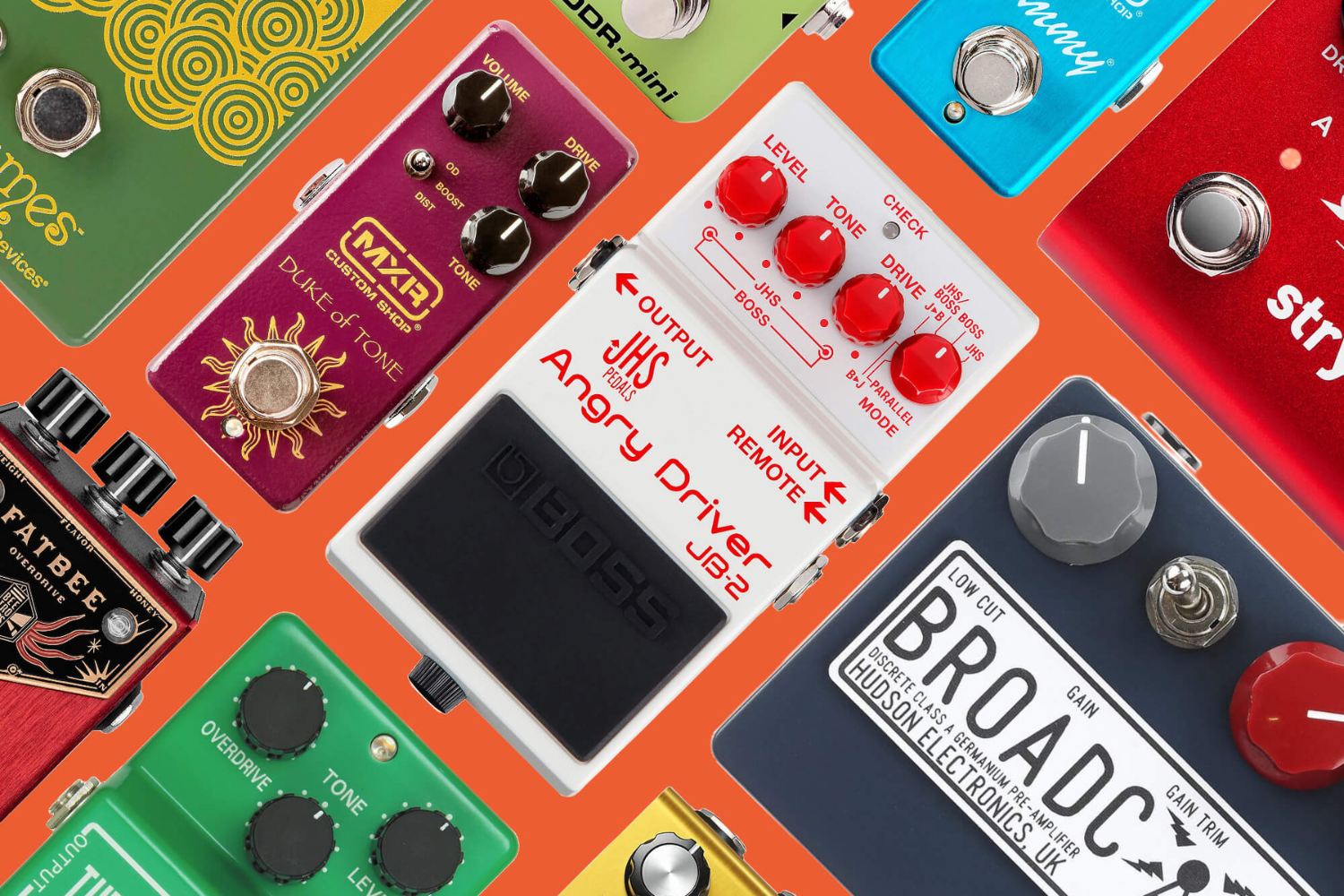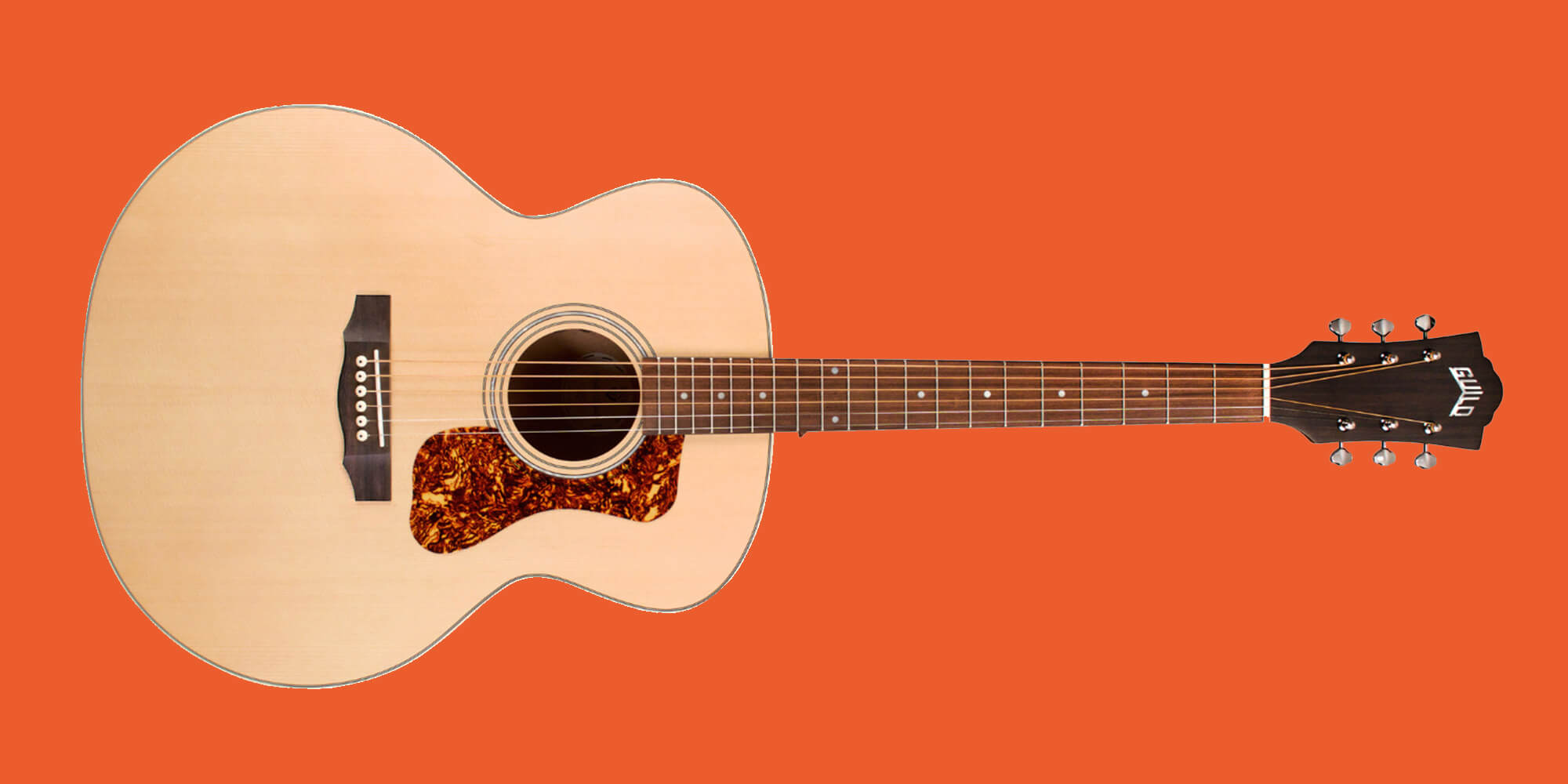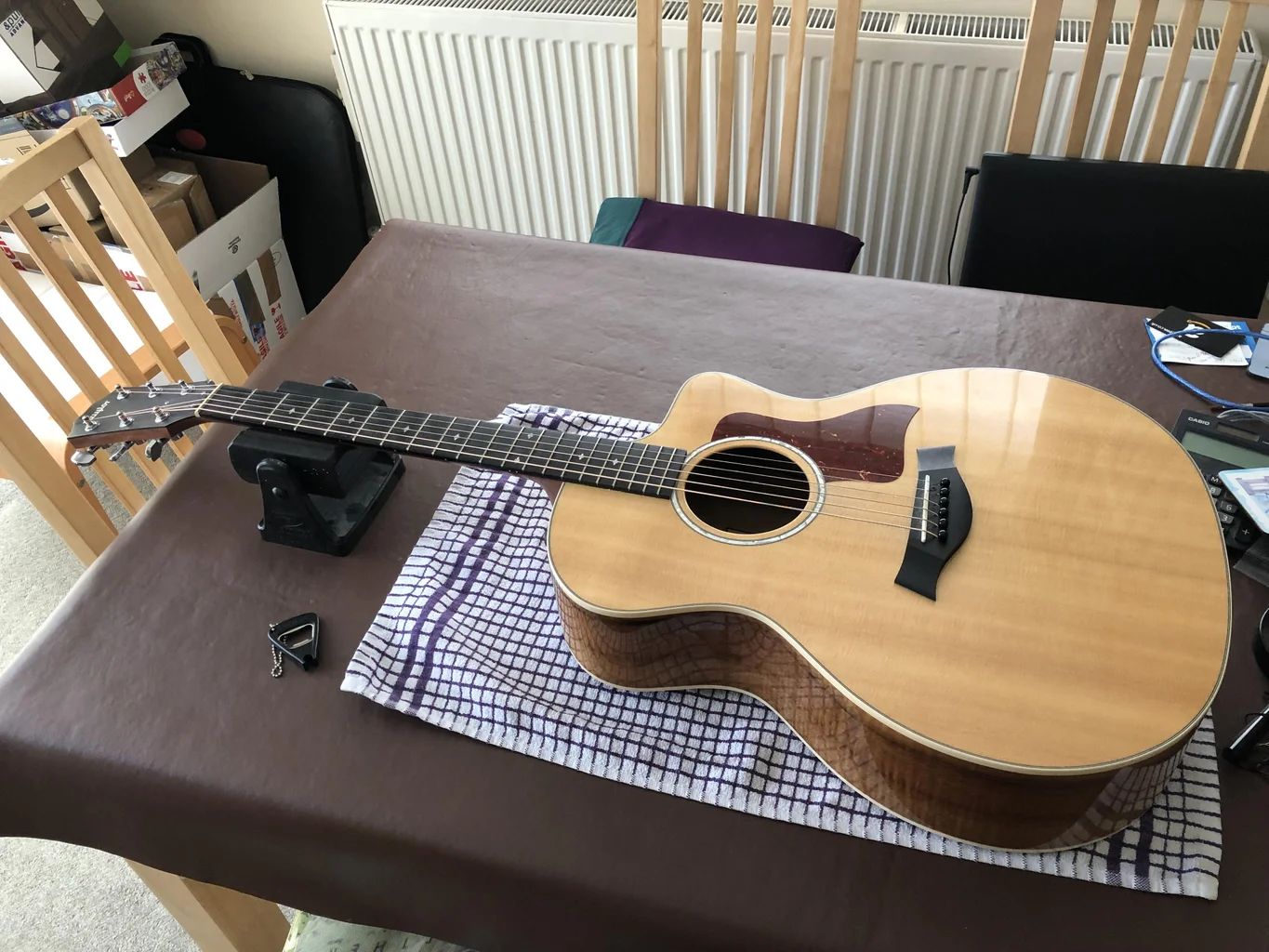Introduction
When it comes to music, the acoustic guitar holds a special place in the hearts of musicians and enthusiasts alike. Its warm and versatile sound has made it a popular choice for a wide range of musical genres, from folk to rock and everything in between. Whether you’re a beginner embarking on your musical journey or an experienced player looking to upgrade, choosing the right acoustic guitar is crucial.
With so many options available in the market, finding the best acoustic guitar can be a challenging task. It requires careful consideration of various factors, such as body type, tonewoods, sound, budget, size, playability, and brand reputation. Each of these aspects plays a vital role in determining the overall quality and suitability of a guitar.
In this guide, we will explore these factors in detail and provide you with the essential information you need to make an informed decision. By understanding the key elements to look for in an acoustic guitar, you’ll be able to find the perfect instrument that resonates with your style, budget, and musical aspirations.
From the classic dreadnought shape to the smaller parlor guitars, we’ll discuss the significance of body types and help you identify which shape suits your playing style and comfort preferences. Additionally, we’ll delve into the world of tonewoods to highlight the impact of different wood types on the guitar’s sound characteristics.
As we progress, we’ll guide you through the importance of finding your ideal tone and explore different factors that contribute to it, such as the guitar’s bracing, strings, and even your playing technique. We’ll also discuss the significance of budget in your guitar-buying journey and provide insights on finding a guitar that fits your price range without compromising on quality.
Furthermore, we’ll address the issue of size, as different players have different physical requirements and playing styles. Understanding the various sizes available and their implications on sound projection and comfort will help you choose a guitar that feels just right.
Playability is another crucial aspect to consider when selecting an acoustic guitar. We’ll explain what comfortable action means and guide you on identifying a guitar that offers a smooth and enjoyable playing experience.
Lastly, we’ll emphasize the importance of brand reputation and how it can serve as a helpful indicator of quality and reliability. We’ll discuss some of the most trusted guitar brands in the market and provide insights on what to look for when researching and evaluating different options.
By the end of this guide, you’ll be equipped with the knowledge and understanding necessary to make an informed decision about the best acoustic guitar for your needs. So, let’s embark on this musical journey together to find the perfect guitar that will become your faithful companion for years to come!
Factors to Consider When Choosing an Acoustic Guitar
Choosing the right acoustic guitar goes beyond picking one that looks good or has a famous brand name. It involves considering several key factors that greatly influence the instrument’s playability, sound quality, and overall value. Let’s take a closer look at these factors:
- Body Type: The body type of an acoustic guitar determines its shape, size, and overall sound projection. Different body types, such as dreadnought, concert, and jumbo, offer distinct tonal characteristics and playing comfort. Consider your playing style and physical stature when choosing a body type that suits your needs.
- Tonewoods: The selection of tonewoods used in the construction of an acoustic guitar greatly affects its sound. Different types of woods, such as mahogany, spruce, rosewood, and cedar, contribute to the guitar’s tonal properties and resonance. Understanding the tonal characteristics of various tonewoods will help you choose a guitar that delivers the desired sound for your musical style.
- Sound: The sound produced by an acoustic guitar depends on various factors, including the body type, tonewoods, and the guitar’s overall construction. Consider the type of sound you prefer, whether it’s bright and articulate or warm and mellow, and choose a guitar that aligns with your sonic preferences.
- Budget: It’s essential to establish a budget before shopping for an acoustic guitar. Determine how much you’re willing to spend and look for guitars within that price range. Remember, there are quality options available at different price points, so it’s crucial to find the right balance between your budget and the guitar’s overall quality.
- Size: Acoustic guitars come in various sizes, ranging from small travel guitars to large-bodied dreadnoughts. Consider your physical stature and playing style when selecting the appropriate size. Smaller-bodied guitars are ideal for beginners or players with smaller hands, while larger guitars may be preferred for their enhanced volume and resonance.
- Playability: Playability refers to how comfortable and easy a guitar is to play. Factors such as the neck profile, string action, and overall setup contribute to a guitar’s playability. Seek a guitar with a comfortable neck shape and proper setup to ensure smooth fretting and ease of playing.
- Brand Reputation: Researching and considering the reputation of different guitar brands is essential. Established brands often have a history of producing high-quality instruments and providing reliable customer support. Look for reviews and recommendations to help you narrow down your options and choose a trusted brand.
By carefully considering these factors when choosing an acoustic guitar, you’ll be able to find an instrument that suits your musical style, preferences, and budget. Take your time, try out different guitars, and trust your instincts. Remember, finding the perfect guitar is a personal journey that should be enjoyable and fulfilling.
Body Type: Which Shape is Right for You?
The body type of an acoustic guitar is a crucial factor to consider when selecting the right instrument for your needs. Each body shape offers unique tonal characteristics, comfort, and playability. Let’s explore some popular body types and help you determine which shape is right for you:
- Dreadnought: The dreadnought is the most common and versatile body shape. It features a large body with a wide waist and a broad soundboard, resulting in a full and powerful sound. Dreadnought guitars are known for their balanced tone, excellent projection, and strong low-end response. They are ideal for strumming, flatpicking, and a wide range of playing styles.
- Concert: Concert guitars are slightly smaller than dreadnoughts and offer a well-balanced tone with clear articulation. They have a more focused sound and are suitable for fingerstyle players, as they provide a comfortable playing experience and are often easier to handle for musicians with smaller hands or a smaller physical build.
- Jumbo: Jumbo guitars are larger and have a more pronounced, boomy sound. They offer enhanced volume, deep bass, and excellent projection. Jumbo guitars are suitable for players who require a lot of volume and want a rich, powerful sound. While they may be less comfortable for smaller players, they provide a bold and commanding presence on stage.
- Parlor: Parlor guitars are small-bodied instruments with a vintage charm. They have a compact shape that is comfortable to hold and play, making them ideal for fingerstyle and blues players. Despite their small size, parlor guitars can produce surprisingly loud and well-balanced tones. They are especially popular among musicians who appreciate a more intimate and intimate sound.
- Grand Auditorium: Grand Auditorium guitars strike a balance between the dreadnought and concert shapes. They offer a versatile sound with a strong midrange, well-defined trebles, and a pleasing bottom end. Grand Auditorium guitars excel in both fingerstyle and strumming, making them a go-to choice for many players seeking a versatile instrument.
When choosing a body type, consider your playing style, physical comfort, and the sound you desire. If you prefer a powerful, booming sound and plan to play in a band setting, a dreadnought or jumbo guitar might be ideal. For fingerstyle players or those with smaller physiques, a concert or parlor guitar may offer better comfort and playability.
It’s important to note that body shape is not the only factor that determines a guitar’s sound and playability. Tonewoods, construction quality, and other factors interact with the body type to create the final tone. Ultimately, it’s worth trying out different body types before making a decision to find the one that feels and sounds right to you.
Take the time to visit guitar stores, try out different models, and get a sense of how each body type feels and sounds in your hands. By doing so, you’ll be able to select an acoustic guitar that not only complements your playing style but also inspires you to create music that resonates with your soul.
Tonewoods: Exploring Different Wood Types
The choice of tonewoods used in the construction of an acoustic guitar significantly influences its sound characteristics. Different wood types have unique tonal properties, resonance, and even aesthetic qualities. Let’s delve into the world of tonewoods and explore the impact they have on an acoustic guitar’s sound:
Spruce: Spruce is one of the most popular tonewoods used for the soundboard of acoustic guitars. It is known for its strength, stiffness, and excellent resonance. Spruce produces a bright and articulate sound with a broad dynamic range. It is often favored by fingerstyle players and those who want a balanced and versatile sound.
Cedar: Cedar has a warmer and more responsive tone compared to spruce. It produces a rich and expressive sound with a strong midrange and delicate trebles. Cedar guitars excel in fingerstyle playing and are favored by musicians seeking a softer and more intimate sound.
Mahogany: Mahogany is a dense and stable tonewood that offers a warm and focused sound. It brings a pronounced midrange presence and tightens up the bass response, providing a punchy and well-defined tone. Mahogany guitars are popular for blues, country, and folk styles, where clarity and a strong midrange are desirable.
Rosewood: Rosewood is highly regarded for its beautiful appearance and rich, complex tone. It produces a warm and balanced sound with resonant bass, sparkling highs, and a wide dynamic range. Rosewood guitars are versatile and suitable for various playing styles, including fingerpicking, strumming, and jazz.
Maple: Maple is known for its bright and transparent sound, with excellent note definition and projection. It offers a crisp and articulate tone that is well-suited for genres such as bluegrass and jazz. Maple guitars have a distinct visual appeal due to their light color and attractive figuring.
Mahogany or Rosewood Back and Sides: Some guitars feature a combination of mahogany or rosewood for the back and sides, complementing the tonal qualities of a spruce or cedar top. This combination can provide a balanced sound that combines the warmth of the back and sides wood with the responsiveness and clarity of the top wood.
It’s important to note that the choice of tonewoods interacts with the guitar’s body shape, bracing, and overall construction to create the final sound. Each tonewood combination produces a unique sonic signature, making each guitar a distinct instrument.
When selecting an acoustic guitar based on tonewoods, consider your preferred playing style and the sound characteristics you desire. Do you want a bright and articulate sound? Consider a spruce or maple top. Prefer a warmer and more intimate sound? Cedar or mahogany might be the way to go. It’s always a good idea to play different guitars with various tonewood combinations to find the sound that resonates with you.
Remember, the choice of tonewoods is a personal preference, and there is no right or wrong answer. Trust your ears and follow your musical instincts in the quest for the perfect acoustic guitar!
Sound: Finding Your Ideal Tone
When it comes to choosing an acoustic guitar, finding your ideal tone is paramount. The sound produced by an acoustic guitar is a result of various factors, including the body shape, tonewoods used, bracing, and even your own playing technique. Let’s explore how you can find your perfect tone:
Consider Your Preferred Sound: Take some time to think about the type of sound you want to achieve. Do you prefer a bright and articulate tone? Or perhaps you lean towards a warmer and more mellow sound? Different tonewoods and body shapes contribute to different sonic characteristics, so understanding your preferences will help guide your decision.
Play Different Guitars: Visit a local music store or guitar showroom and play a variety of guitars. Pay attention to how they sound when strummed, fingerpicked, or played with a pick. Each guitar will have its own unique voice, and experimenting with different instruments will help you develop a better understanding of the specific tonal qualities you gravitate towards.
Listen and Compare: While playing different guitars, listen carefully to the nuances in each instrument’s tone. Notice the differences in the highs, mids, and lows. Consider the overall balance and projection of the sound. Comparing and contrasting different guitars side by side will help you identify the specific tonal characteristics you prefer.
Experiment with Different Tonewood Combinations: The combination of tonewoods used in the construction of an acoustic guitar greatly affects its sound. Try guitars with different tonewood combinations to hear how they contribute to the overall tone. For example, a spruce top may provide clarity and brightness, while a rosewood body may add warmth and depth. Finding the perfect combination for your desired tone can make a significant difference in your playing experience.
Consider the Guitar’s Bracing: Bracing refers to the internal framework of an acoustic guitar that helps support the top and shape the sound. Different bracing patterns can significantly impact the instrument’s tone and resonance. Some bracing designs emphasize sustain and projection, while others enhance a specific tonal range. Understanding and experimenting with different bracing designs can help you find a guitar that produces the sound you prefer.
Factor in Your Playing Style: Your playing technique and style can also influence the sound produced by a guitar. Certain guitars may be more responsive to fingerpicking, while others may excel at strumming. Consider how the guitar responds to your playing style and whether it complements and enhances your musical expression.
It’s important to note that the perfect tone is subjective and unique to each individual. What sounds great to one person may not resonate with another. The key is to explore different options, trust your ears, and choose a guitar that speaks to you and brings out your musical creativity.
Remember, finding your ideal tone is an ongoing pursuit that may evolve as your playing progresses. Don’t be afraid to experiment, ask for recommendations, and seek guidance from experienced players or music professionals. By taking the time to truly discover your preferred tone, you’ll find an acoustic guitar that becomes a true extension of your musical identity.
Budget: Finding a Guitar that Fits Your Price Range
When it comes to purchasing an acoustic guitar, setting a budget is a practical and essential step. Your budget will determine the options available to you, but it doesn’t mean you have to sacrifice quality or settle for an inferior instrument. Here are some tips to help you find a guitar that fits your price range:
Establish Your Budget: Determine how much you’re willing to spend on an acoustic guitar. Take into account your financial situation, your commitment to playing, and your long-term goals. Setting a budget will focus your search and guide your decision-making process.
Research Different Price Ranges: Begin by researching guitars within your budget. Look for reputable brands that offer quality instruments at various price points. It’s important to note that there are reliable options available in different price ranges, so don’t feel limited by your budget.
Consider Value for Money: Look for guitars that offer the best value for your money. Consider the quality of materials, craftsmanship, and overall reputation of the brand. Sometimes spending a bit more upfront can result in a guitar that will bring you long-term enjoyment and retain its value.
Visit Local Guitar Stores: Take the time to visit local guitar stores and try out guitars within your budget. Play them and listen to how they sound. Pay attention to the level of comfort and playability they offer. This hands-on experience will provide valuable insights and help you make an informed decision.
Consider Buying Used: Buying a used guitar can be an excellent way to stretch your budget and still acquire a quality instrument. Many used guitars are in great condition, and you may find a higher-end model at a more affordable price. Just be sure to inspect the guitar thoroughly and play it before making a purchase.
Seek Recommendations: Ask experienced musicians, guitar teachers, or music professionals for recommendations within your budget. They may have valuable insights or suggestions based on their own experiences. Consider their advice, but ultimately trust your own preferences and instincts.
Read Reviews and Do Your Research: Before making a final decision, read reviews and do additional research on guitars that fit your budget. Look for reliable sources and consider the opinions of other players. It’s helpful to gather as much information as possible to make an informed choice.
Consider Long-Term Investment: While budget is important, consider your long-term investment in a guitar. A quality instrument that suits your playing style and resonates with your musical expression can bring you years of joy and inspiration. It’s worth stretching your budget a bit if it means finding a guitar that you’ll love to play for years to come.
Remember, finding a guitar that fits your budget is possible. By doing thorough research, exploring different options, and taking the time to play and evaluate guitars, you’ll be able to find an instrument that suits your needs without compromising on quality or value.
Size: Which Size Guitar is Suitable for You?
When choosing an acoustic guitar, considering the size of the instrument is crucial to finding one that is comfortable to play and suits your physical requirements. Acoustic guitars come in various sizes, each offering unique characteristics and suitability for different players. Let’s explore the different sizes and help you determine which is suitable for you:
Full-Size/Dreadnought: Full-size or dreadnought guitars are the most common and widely recognized acoustic guitar size. They have a large body with a deep, resonant tone and excellent volume. Dreadnoughts are suitable for players of all sizes but are especially popular among those who enjoy strumming and playing with a pick due to their powerful sound projection.
Concert/Grand Auditorium: Concert or grand auditorium guitars are slightly smaller than dreadnoughts and offer a balanced sound with a more focused midrange. They are versatile instruments suitable for various playing styles, making them a popular choice for many musicians. Their size is comfortable for most players, including those with smaller physiques or those who prefer a more maneuverable instrument.
Parlor: Parlor guitars have a smaller, more compact body size, making them ideal for players who want a comfortable and easily portable instrument. Despite their size, parlor guitars can produce surprisingly loud and well-balanced tones. They are great for fingerstyle playing and are often favored by blues and folk musicians who appreciate a more intimate sound and vintage aesthetic.
Travel/Mini: Travel or mini acoustic guitars are even smaller than parlor guitars and are designed for convenient portability. They are perfect for musicians on the go or beginners who want a compact and accessible instrument. While travel guitars may sacrifice some volume and low-end response due to their smaller size, they offer a great option for practicing, songwriting, or playing in tight spaces.
Jumbo: Jumbo guitars have a large body with a rounded shape, providing a booming and powerful sound. They are perfect for players who desire rich, bass-heavy tones and maximum volume. However, due to their size, jumbo guitars may be less comfortable for smaller players or those who prefer a more compact instrument.
When choosing the right size guitar, consider your physical comfort, playing style, and the sound you desire. Smaller-bodied guitars like the concert and parlor sizes are suitable for those who prefer a more intimate sound or have smaller hands, while larger-bodied guitars like dreadnoughts and jumbos may be preferred for their enhanced volume and resonance.
It’s important to note that size is not the sole factor determining a guitar’s sound and playability. Other factors like tonewoods, construction, and setup also play a significant role. Consider trying out guitars of different sizes to get a sense of the comfort and sound that resonate with you.
Ultimately, finding the right size guitar involves a balance between physical comfort, playing style, and the desired sound characteristics. By considering these factors and spending time playing different sizes, you’ll be able to find an acoustic guitar that feels natural and inspires your musical journey.
Playability: Finding a Guitar with Comfortable Action
When searching for the perfect acoustic guitar, playability is a crucial aspect to consider. Playability refers to how comfortable and easy a guitar is to play, primarily influenced by factors such as the neck profile, string height (action), and overall setup. Finding a guitar with comfortable action can greatly enhance your playing experience and allow you to fully express your musicality. Here are some key points to consider:
Neck Profile: The neck profile refers to the shape and thickness of the guitar’s neck. Different neck shapes, such as C-shaped, V-shaped, or U-shaped, offer varying degrees of comfort and support for different playing styles. Experiment with different neck profiles to find the one that feels most comfortable and natural in your hand.
Action: Guitar action refers to the height of the strings above the fretboard. A lower action means the strings are closer to the fretboard, making it easier to press down and play notes. Higher action can result in more effort required to fret the strings. Finding a guitar with a comfortable action is crucial, as it allows for smoother and more effortless playing.
String Gauge: The gauge of the strings on your acoustic guitar also affects playability. Lighter gauge strings require less finger pressure to fret, making them more suitable for beginners or players with weaker fingers. Heavier gauge strings may provide a fuller sound but can be more challenging to play, especially for those with smaller hands or less finger strength. Consider your playing level and physical abilities when choosing the appropriate string gauge.
Fretboard Material: The material used for the guitar’s fretboard can impact playability as well. Rosewood and ebony are popular choices known for their smoothness and durability. These materials allow for comfortable finger movement and reduce the likelihood of hand fatigue during extended playing sessions.
Setup: A well-set-up guitar is crucial for optimal playability. Proper setup includes adjusting the truss rod, bridge, and nut to ensure proper string height and intonation. It’s advisable to have a professional guitar technician perform a setup or check the setup of a guitar you’re interested in to ensure it plays smoothly and in tune across the entire fretboard.
Test and Evaluate: Nothing beats actually playing and testing a guitar to assess its playability. Visit a guitar store and spend time trying out different models. Pay attention to how easy it is to fret chords, play scales, and perform bends. Consider the comfort of your hands and whether the guitar feels like an extension of your musical expression.
Remember that playability is a personal preference, and what may be comfortable for one guitarist may not be for another. It’s crucial to find a guitar that suits your playing style, hand size, and physical requirements. Take the time to experiment with different guitars, neck profiles, and setups until you find a guitar that feels comfortable and allows your playing to flow effortlessly.
Keep in mind that playability can be adjusted through setup modifications, such as adjusting the action or changing the string gauge. If you find a guitar with the right sound and feel but the action isn’t perfect, a skilled guitar technician can often make the necessary adjustments to improve the playability to your liking.
Ultimately, finding a guitar with comfortable action is vital to ensure an enjoyable playing experience and to encourage you to pick up the instrument and play for hours on end. Prioritize playability alongside other factors like sound and construction quality, and you’ll be well on your way to finding your perfect acoustic companion.
Brand Reputation: Researching Trusted Guitar Brands
When it comes to purchasing an acoustic guitar, considering the reputation of the brand is an important factor to consider. Trusted guitar brands have built a reputation for producing high-quality instruments that consistently meet or exceed the expectations of musicians. Here’s why researching trusted guitar brands is essential:
Quality Assurance: Established and reputable guitar brands have a history of producing instruments with excellent craftsmanship and attention to detail. They strive for consistent quality control processes, ensuring that every guitar that leaves their factory meets a certain standard of excellence. This quality assurance guarantees that you are investing in a guitar that is built to last.
Customer Support: Trusted guitar brands usually offer reliable customer support. If you encounter any issues or have questions about your instrument, they are more likely to provide helpful assistance and guidance. Their experience and expertise can be invaluable, especially for new guitar players who may need guidance on maintenance, setup, or troubleshooting.
Resale Value: Guitars from reputable brands often retain their value well, making them a desirable asset for potential resale in the future. While it’s important to focus on finding the right guitar for your needs, considering the potential resale value can be a smart move if you anticipate needing to upgrade or sell your instrument down the line.
Wide Range of Options: Trusted guitar brands typically offer a wide range of models and styles catering to various playing styles and budgets. Whether you’re a beginner, intermediate, or professional player, you can find a guitar that suits your needs within a trusted brand’s lineup. This breadth of options allows you to explore and choose the perfect instrument that matches your preferences.
Availability of Spare Parts and Accessories: Popular guitar brands often have a wide network of authorized dealers and distributors, making it easier to find spare parts, accessories, and upgrades for your instrument. This availability can be advantageous if you need to replace a broken string or if you want to customize your guitar with new pickups or hardware.
Community and Resonance: Trusted guitar brands develop a community of players who appreciate their instruments and endorse their products. Collaborative efforts with renowned musicians and endorsements from professionals create a sense of resonance and trust among players. This positive community can provide opportunities for learning, networking, and sharing experiences with other musicians.
It’s worth noting that while trusted guitar brands have a reputation for quality, there are also many smaller and lesser-known manufacturers that produce excellent guitars. The key is to research and gather information on the specific models and brands you’re interested in and read reviews or seek advice from experienced musicians.
Take the time to explore different brands, visit guitar stores to try out different models, and ask for recommendations from guitar teachers or experienced players. By doing thorough research and due diligence, you’ll be able to make an informed decision and choose a reputable brand that aligns with your preferences and needs.
Remember, the guitar you select should inspire you to play and create music. The reputation of the brand is an essential element in finding an instrument that will become your trusted companion on your musical journey.
Top 5 Acoustic Guitars on the Market
With numerous options available, it can be overwhelming to choose the best acoustic guitar for your needs. To help you in your search, here are five highly recommended acoustic guitars that have garnered widespread acclaim from musicians and experts:
- Taylor 214ce: The Taylor 214ce is a versatile and well-rounded acoustic guitar. It features a solid Sitka spruce top with layered rosewood back and sides, delivering a balanced and articulate sound. With its comfortable Grand Auditorium body shape and Taylor’s exceptional craftsmanship, the 214ce offers a rich tone, excellent playability, and built-in electronics for stage performances.
- Martin D-28: The Martin D-28 is a legendary guitar known for its timeless sound and powerful projection. It features a solid Sitka spruce top with rosewood back and sides, resulting in a rich and full-bodied tone. The D-28’s dreadnought body shape, impeccable construction, and iconic Martin craftsmanship make it a favorite among acoustic guitar enthusiasts and professional musicians alike.
- Gibson J-45: The Gibson J-45 is an iconic acoustic guitar famous for its warm and expressive sound. With a solid Sitka spruce top and mahogany back and sides, this classic round-shoulder dreadnought delivers a balanced tone with a strong midrange and excellent projection. The J-45’s comfortable neck profile, superb craftsmanship, and vintage charm make it a favorite among singer-songwriters and folk musicians.
- Seagull S6 Original: The Seagull S6 Original offers exceptional value for its price and is highly regarded as one of the best entry-level acoustic guitars. It features a solid cedar top, wild cherry back and sides, and a comfortable dreadnought body shape. The S6 Original delivers a warm and articulate sound with excellent playability, making it an excellent choice for beginners and budget-conscious players looking for quality craftsmanship and tone.
- Yamaha FG800: The Yamaha FG800 is another top-rated guitar for beginners and players on a budget. This dreadnought-style acoustic guitar features a solid spruce top with nato/okume back and sides, producing a robust and versatile sound. The FG800 boasts outstanding build quality, comfortable playability, and a reputation for reliability, making it a popular choice for those seeking a reliable and affordable instrument.
These five acoustic guitars represent a variety of price ranges, styles, and tonal characteristics, catering to different playing preferences and budgets. However, it’s important to remember that the best guitar for you is ultimately one that feels comfortable, inspires you to play, and suits your musical style and goals.
When choosing an acoustic guitar, it’s always recommended to play and compare different models before making a decision. Visit local guitar stores, try out the guitars, and consider seeking advice from experienced musicians or guitar instructors. Your own hands and ears will guide you to the guitar that resonates with you the most.
Lastly, keep in mind that this list is not exhaustive, and there are many other exceptional guitars available. Explore different brands, models, and styles to find the acoustic guitar that meets your specific needs and preferences. The journey of finding the perfect guitar is part of the joy of being a musician, so enjoy the process and let your passion for music guide you!
Conclusion
Choosing the right acoustic guitar is a deeply personal journey that involves considering a multitude of factors. By carefully considering body type, tonewoods, sound, budget, size, playability, and brand reputation, you can find a guitar that fits your needs and inspires your musical creativity.
When it comes to body type, explore different shapes such as dreadnoughts, concerts, jumbos, parlors, and grand auditoriums to find the one that suits your playing style and comfort preferences. Understand the tonal characteristics of different tonewoods like spruce, cedar, mahogany, rosewood, and maple to select a guitar with the desired sound qualities.
Delve into the realm of sound by listening and comparing different guitars, paying attention to the range and balance of highs, mids, and lows. Remember to consider your own preferred sound and how it aligns with different tonewood combinations and bracing patterns.
Setting a budget is essential, but don’t let it limit your options. Look for guitars that offer the best value for your money and consider the long-term investment and potential resale value. Explore different sizes, from full-size dreadnoughts to parlor and travel guitars, and choose the one that feels comfortable and suits your specific needs.
Playability is key to enjoying your guitar-playing experience. Find a guitar with a comfortable neck profile, suitable action, and well-set-up structure. Consider the availability of spare parts and accessories to ensure you can maintain and customize your instrument as needed.
Lastly, researching trusted guitar brands can lead you to instruments that have a reputation for quality, excellent customer support, and a wide range of options. However, remember that brand reputation is just one aspect to consider, and there are many lesser-known manufacturers producing outstanding guitars.
Ultimately, the ideal acoustic guitar for you is one that feels comfortable and suits your playing style, preferences, and budget. Take the time to explore different options and trust your own ears and instincts. Visit local guitar stores, playtest guitars, seek recommendations, and gather as much information as possible to make an informed decision.
Embark on this journey with excitement and curiosity, knowing that the search for the perfect acoustic guitar is part of the joy of being a musician. Whether you’re a beginner or an experienced player, the right guitar will become a trusted companion on your musical journey, inspiring you to create beautiful melodies and express yourself through the universal language of music.









